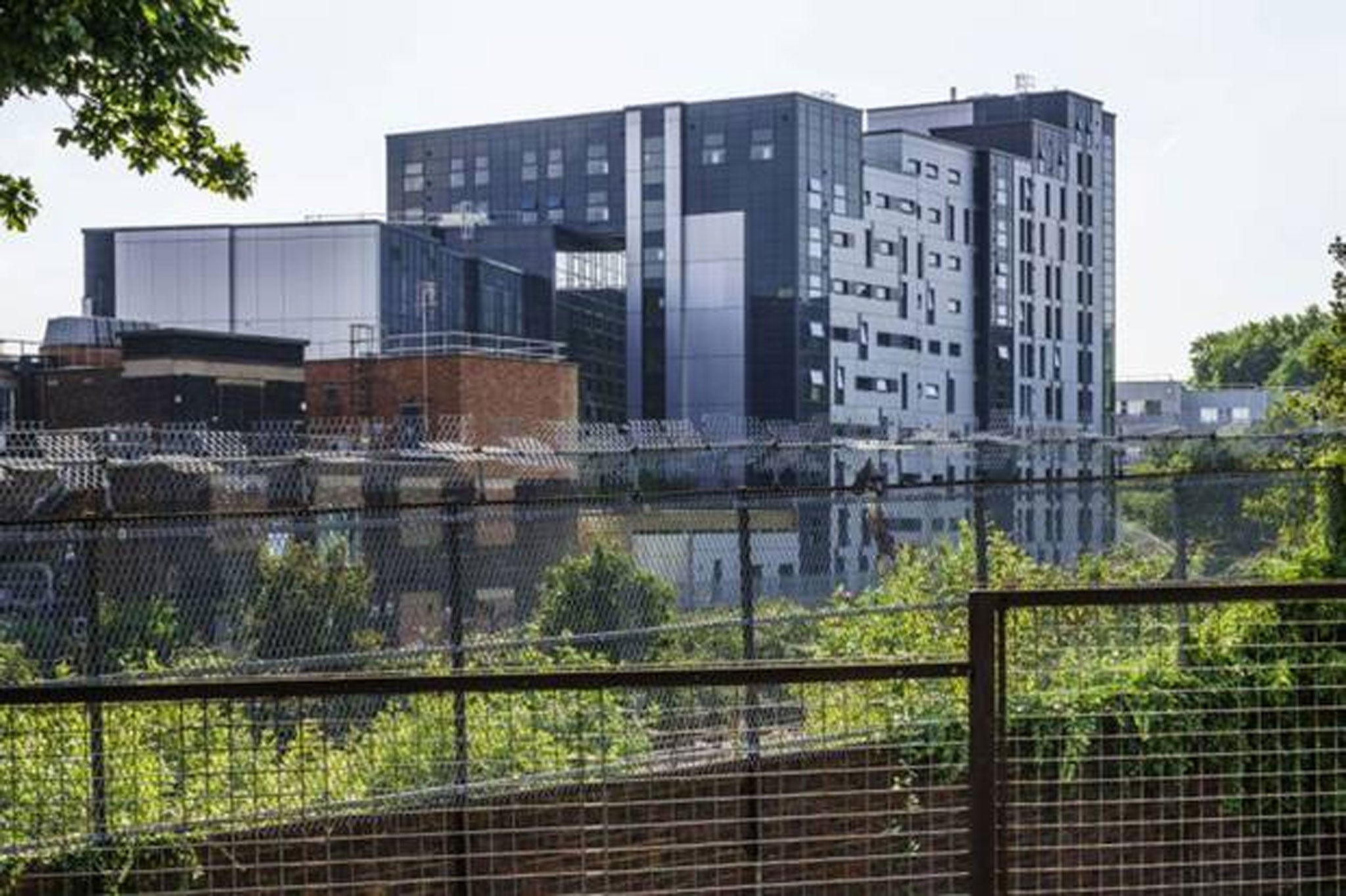Choosing the right university is one of the most critical decisions a student can make. However, not all institutions meet the expectations of quality education, facilities, and student satisfaction. The term "worst university in the UK" often comes up in discussions when evaluating institutions that may fall short in certain areas. Understanding the factors that contribute to this perception is essential for prospective students and their families.
While no university is inherently "bad," some may struggle with specific challenges such as low graduate employability rates, poor student reviews, inadequate facilities, or low academic rankings. These factors can significantly impact a student's overall experience. In this article, we will delve into the topic, examining the criteria used to evaluate universities, the challenges faced by some institutions, and how students can make informed decisions.
Our goal is to provide a balanced and well-researched analysis of the concept of "worst university in the UK." By the end of this article, you'll have a clearer understanding of what to look for when choosing a university and how to avoid institutions that may not align with your academic and career goals.
Read also:Exploring The Legacy And Impact Of Mathew Knight Arena
Table of Contents
- Criteria for Evaluating Universities
- University Rankings and Their Importance
- Common Challenges Faced by Universities
- Student Experience: What Matters Most?
- Campus Facilities and Resources
- Graduate Outcomes and Employability
- Reputation and Brand Image
- Case Studies: Universities Under Scrutiny
- Data and Statistics: The Numbers Behind the Rankings
- Conclusion: Making the Right Choice
Criteria for Evaluating Universities
When discussing the "worst university in the UK," it's crucial to define the criteria used to evaluate institutions. These criteria typically include academic quality, student satisfaction, graduate employability, campus facilities, and overall reputation. Each of these factors plays a significant role in shaping a university's standing among peers and in the eyes of prospective students.
For instance, universities that consistently rank low in national and international rankings often face scrutiny for not meeting these standards. While rankings are not the sole indicator of quality, they provide valuable insights into an institution's strengths and weaknesses.
Academic Quality
Academic quality is one of the primary indicators of a university's performance. It encompasses the quality of teaching, research output, and the qualifications of faculty members. Institutions with low academic standards may struggle to attract top talent and provide students with the education they deserve.
Student Satisfaction
Student satisfaction is another critical factor. Surveys such as the National Student Survey (NSS) in the UK provide valuable feedback from current students about their experiences. Universities with consistently low satisfaction scores may indicate issues with teaching quality, support services, or campus life.
University Rankings and Their Importance
University rankings are a widely used tool for comparing institutions. They provide a snapshot of a university's performance based on various metrics, including research output, teaching quality, and international outlook. While rankings should not be the only factor considered, they offer a useful starting point for students researching potential universities.
Some of the most reputable ranking systems include the QS World University Rankings, Times Higher Education (THE), and the Complete University Guide (CUG). These rankings often highlight institutions that excel in specific areas, as well as those that may lag behind.
Read also:Mcs App Portak A Comprehensive Guide To Understanding And Utilizing The Application
Limitations of Rankings
- Rankings may not capture the full picture of a university's strengths and weaknesses.
- They can sometimes overlook smaller institutions with niche specialties.
- Focus on specific metrics may not align with every student's priorities.
Common Challenges Faced by Universities
Universities across the UK face various challenges that can impact their reputation and performance. Some of these challenges include financial constraints, declining student enrollment, and outdated infrastructure. Addressing these issues is essential for institutions striving to improve their standing.
For example, universities with limited budgets may struggle to provide state-of-the-art facilities or hire highly qualified faculty members. This can lead to dissatisfaction among students and affect the overall quality of education.
Financial Constraints
Financial challenges are a common issue for many universities, particularly those with smaller endowments. Reduced government funding and rising operational costs can strain resources, leading to cuts in essential services and programs.
Declining Enrollment
Declining student enrollment is another significant challenge. Institutions that fail to attract sufficient numbers of students may face financial difficulties and struggle to maintain their programs. This trend can be particularly problematic for smaller or less well-known universities.
Student Experience: What Matters Most?
The student experience is a key factor in determining the quality of a university. This encompasses everything from the quality of teaching to extracurricular activities and campus life. Universities that prioritize student well-being and engagement tend to have higher satisfaction rates and better outcomes.
Some of the most important aspects of the student experience include:
- Quality of teaching and learning
- Access to support services (e.g., counseling, career guidance)
- Extracurricular opportunities (e.g., clubs, sports)
- Social and cultural diversity
Teaching Quality
High-quality teaching is at the heart of any successful university. Institutions that invest in experienced faculty members and innovative teaching methods tend to produce better results. Conversely, universities with poor teaching quality may struggle to retain students and achieve positive outcomes.
Campus Facilities and Resources
Campus facilities play a crucial role in shaping the student experience. Modern universities typically offer a range of amenities, including libraries, laboratories, sports facilities, and accommodation options. Institutions with outdated or inadequate facilities may not meet the expectations of today's students.
For example, universities with limited library resources or outdated technology may hinder students' ability to conduct research and complete assignments effectively.
Technology and Innovation
Technology is increasingly important in higher education. Universities that embrace innovation and provide students with access to cutting-edge tools and resources tend to have a competitive edge. Conversely, institutions that lag behind in this area may struggle to attract tech-savvy students.
Graduate Outcomes and Employability
Graduate outcomes are a critical measure of a university's success. Employability rates, starting salaries, and career progression are key indicators of how well an institution prepares its students for the workforce. Universities with poor graduate outcomes may face reputational challenges and declining enrollment.
According to data from the Higher Education Statistics Agency (HESA), some universities consistently report lower graduate employment rates compared to their peers. This can be a red flag for prospective students looking to maximize their career prospects.
Employer Reputation
Employer reputation is another important factor. Universities with strong connections to industry and a track record of producing successful graduates tend to have better outcomes. Institutions that fail to build these relationships may struggle to secure internships and job placements for their students.
Reputation and Brand Image
A university's reputation is closely tied to its brand image. Institutions with strong reputations often benefit from increased applications, higher rankings, and better funding opportunities. Conversely, universities with poor reputations may face challenges in attracting students and faculty.
Reputation is shaped by a variety of factors, including media coverage, alumni networks, and public perception. Universities that actively work to improve their image through marketing and community engagement tend to fare better in the long run.
Media Coverage
Media coverage can significantly impact a university's reputation. Positive stories about research breakthroughs or successful alumni can enhance an institution's image, while negative reports about financial difficulties or scandals can harm it.
Case Studies: Universities Under Scrutiny
To better understand the concept of the "worst university in the UK," let's examine a few case studies of institutions that have faced scrutiny in recent years. These examples highlight the challenges faced by some universities and the steps they are taking to improve.
For instance, the University of X has been criticized for its low student satisfaction scores and declining enrollment numbers. In response, the university has implemented new initiatives to enhance the student experience and attract more applicants.
University of Y
The University of Y has faced similar challenges, with low graduate employability rates and outdated facilities. To address these issues, the university has invested in modernizing its infrastructure and expanding its career services.
Data and Statistics: The Numbers Behind the Rankings
Data and statistics provide valuable insights into the performance of universities. According to the Complete University Guide (CUG), some institutions consistently rank lower in key metrics such as student satisfaction, research quality, and graduate outcomes.
For example, the following statistics highlight the disparities between top-performing and lower-ranked universities:
- Student satisfaction rates vary significantly, with some institutions scoring as low as 60% in the NSS.
- Graduate employment rates range from 85% to as low as 50% in some cases.
- Research output scores differ widely, reflecting the varying priorities of different institutions.
Conclusion: Making the Right Choice
In conclusion, the concept of the "worst university in the UK" is multifaceted and depends on various factors. While no university is perfect, some institutions may struggle more than others in certain areas. By evaluating criteria such as academic quality, student satisfaction, graduate outcomes, and reputation, students can make informed decisions about their education.
We encourage readers to consider their individual needs and priorities when choosing a university. Don't hesitate to leave a comment or share this article with others who may find it useful. Additionally, explore our other articles for more insights into higher education and career planning.

